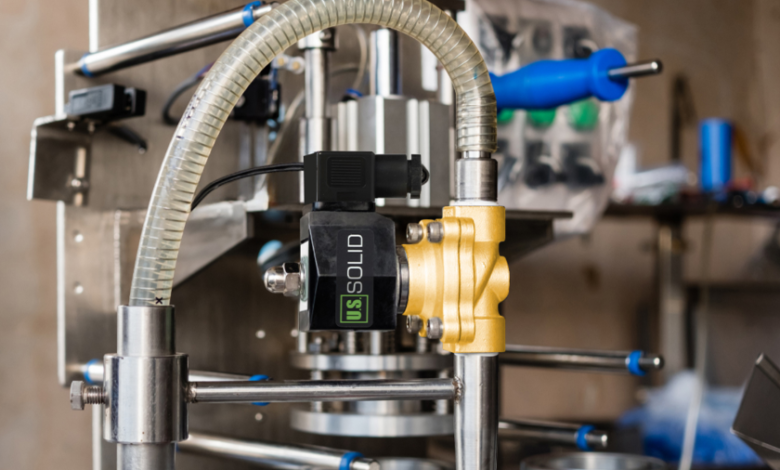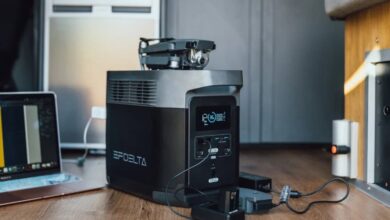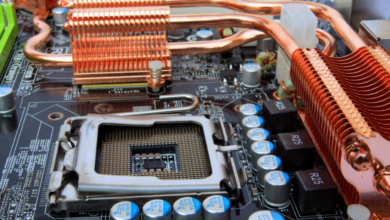What Is a Vacuum Solenoid and How Does It Work?

A vacuum solenoid is a critical device used to control the flow of air or gas in various industrial and automation systems, enabling precise operation and reliable performance. By regulating suction and release mechanisms, vacuum solenoids play a key role in factory lifting systems, pneumatic machines, and other automated processes. In this article, we’ll explain the fundamentals of vacuum solenoids, their working principles, and their applications in modern industry.
What Is a Vacuum Solenoid?
A vacuum solenoid (or vacuum solenoid valve) is an electrically controlled valve that regulates the flow of air or gas in a vacuum system, which is a system operating below normal atmospheric pressure. In simple terms, it acts like a gatekeeper for suction. It sits between a vacuum source (like a pump) and the area where you want to control pressure. When switched on or off, it opens or closes the path for air, controlling when suction is applied or released.
Common Uses:
- Vacuum grippers and lifters: To pick up or release objects.
- Vacuum pumps and scientific equipment: To control airflow precisely.
- Automotive systems: For components like EGR valves or turbo control systems.
A vacuum solenoid is a small but important device that uses electricity to control the flow of vacuum. It allows precise control of suction and release in various systems, from robots and laboratory equipment to car engines.
How Does a Vacuum Solenoid Work?
A vacuum solenoid controls airflow in a vacuum system using an electric signal. Here’s how it works step by step:
- Activation – When the control unit sends an electrical signal, the solenoid’s coil is powered. This creates a magnetic field that moves a plunger, opening the valve. Air is drawn out of the suction cups, creating a vacuum that allows them to grip a load securely.
- Maintaining the Vacuum – The valve carefully controls the airflow to maintain the correct vacuum pressure. This ensures that the suction cups keep a firm grip on the load during lifting or transport, preventing slippage or loss of hold.
- Release – When the control signal stops, the solenoid coil turns off, causing the plunger to close the valve. Air flows back into the suction cups, releasing the vacuum and allowing the load to be safely removed.
A vacuum solenoid works by using an electromagnetic coil to open and close a valve, controlling suction in a precise and reliable way.
Applications of Vacuum Solenoids
Vacuum solenoid valves are widely used across industries to control airflow and vacuum pressure, helping perform important tasks in different systems and applications.
Manufacturing
Vacuum solenoid valves help automate material handling in manufacturing. They control suction in robotic arms, conveyors, and assembly lines, making it easy to move delicate or oddly shaped parts safely and accurately. This automation reduces manual work, speeds up production, improves product quality, and makes the whole process more efficient.
Logistics
In logistics and warehousing, vacuum solenoid valves are important for automated packaging and sorting systems. They control suction cups that can quickly lift, move, and release packages of different sizes and weights. This automation reduces the need for manual labor, speeds up order processing, and improves efficiency in distribution centers. Precise vacuum control also ensures that fragile items are handled gently and prevent damage during transport or sorting.
Automotive
Vacuum solenoid valves are essential in automotive applications for managing engines and controlling emissions efficiently. For instance:
- Exhaust Gas Recirculation (EGR) systems: The valves regulate vacuum flow to optimize engine performance and reduce emissions.
- Brake boosters: They maintain consistent braking performance by controlling vacuum pressure.
By accurately managing vacuum, these valves improve fuel efficiency, reduce harmful emissions, and enhance vehicle safety.
Packaging
Vacuum solenoid valves help keep products fresh and make packaging processes faster. They are used in vacuum sealing machines to remove air, extend shelf life, and prevent contamination. In thermoforming, they control the vacuum that shapes plastic into containers, ensuring consistent, accurate results and reducing waste. Overall, these valves help automate packaging, speed up production, maintain quality, and reduce mistakes.
See also: Vibe Coding and Developer Wellbeing: A New Approach to Tech Culture
Advantages of Using Vacuum Solenoids
Vacuum solenoid valves provide precise control, efficiency, versatility, and durability, making them essential in modern industrial automation.
Precision Control
These valves allow accurate regulation of vacuum levels, ensuring automated systems operate consistently. Their fast response times enable immediate adjustments in vacuum pressure, which is critical for processes like material handling and packaging. This precision reduces errors and improves overall process quality.
Efficiency
Vacuum solenoid valves improve gripping efficiency by controlling suction flow quickly and precisely. This leads to faster cycle times and smoother handling of objects in automated systems. Their reliable performance ensures consistent operation even in high-speed industrial environments.
Versatility
Vacuum solenoid valves come in a variety of types and designs, making them suitable for many industries. They can work with a variety of vacuum systems and handle different types of air or gas, offering flexibility for many applications.
Durability
Vacuum solenoid valves are built from durable, industrial-grade materials that can withstand harsh conditions such as high temperatures, corrosive substances, and constant use. This makes them long-lasting, reliable, and reduces the need for frequent maintenance or downtime.
Considerations for Selecting a Vacuum Solenoid
When selecting a vacuum solenoid valve, you should first assess your system’s requirements to ensure it works efficiently and reliably. The main factors to consider include:
Vacuum System Specifications
When choosing a vacuum solenoid valve, consider the specific requirements of your system. Determine the vacuum level needed, whether rough, medium, high, or ultra-high. Ensure the valve can handle the required flow rate to avoid airflow bottlenecks. Also, verify that it can safely operate under your system’s maximum pressure and temperature conditions.
Valve Type
Vacuum solenoid valves come in different types for different uses.
- Direct-Acting Valves: Best for low-pressure, low-flow systems. They respond quickly and operate simply.
- Pilot-Operated Valves: Designed for high-pressure, high-flow systems. A small pilot valve controls the main valve to handle larger volumes.
- Three-Way Valves: Can switch between vacuum and atmospheric pressure, making them ideal for controlling suction and release in vacuum gripping applications.
Materials
The valve body and internal parts must be made of durable, compatible materials. Stainless steel is ideal for corrosion resistance, while brass works for general-purpose use. Seals and diaphragms should match the type of air or gas and temperature, with common choices being Viton and EPDM.
Electrical Specifications
Electrical specifications determine how the vacuum solenoid valve connects to and works with your system’s power. Ensure the valve’s voltage and current match your power supply. Check the duty cycle to see if it can operate continuously or only intermittently. Also, confirm that the connector type is compatible with your wiring to ensure safe and reliable operation.
Selecting a valve based on these factors ensures safe, efficient, and reliable vacuum system operation.




